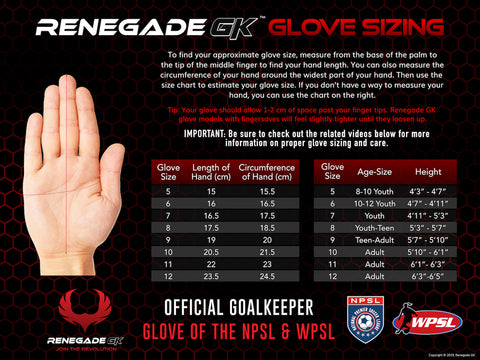It is crucial that goalkeepers communicate and establish presence on the field. There are so many factors and components that feed into this, but the one part that is essential is the keeper's ability to communicate and direct play on the field.
The goalkeeper's ability to effectively accomplish this is entirely dependent on their understanding of what is happening; what needs to happen on the field; and an ability to quickly and communicate this to their team. Neglect of the keeper's understanding of the full game results in a keeper who can't communicate effectively and doesn't develop the presence needed on the field.

A significant reason this is so often neglected is the specialized training and coaching that a keeper frequently receives is position-specific and away from the rest of the team. This training is essential, but it has its limitations. It puts the goalkeeper at a disadvantage when the keeper is away training, the rest of the team is learning tactics to use in games. When the goalkeeper returns, they are expected not only to make the save but also to read and direct gameplay.
The goalkeeper hasn't been with the team as they progress through tactical demands and strategies and they may not be able to understand what the team is doing or how to communicate adjustments.
Some coaches may be able to recognize this and may tell the keeper what system they're playing (trying to be helpful), but this alone is not enough.
So how to train a well-rounded goalkeeper? How can you effectively train a goalie on their position while developing their tactical understanding of the game? Being able to tackle these coaching issues means training a keeper to become a confident, constructive voice on the field.
Goalkeepers can begin developing communication skills early on- giving out commands as simple as calling 'keeper' when they are going for the ball. Training for this sounds easy, but all too often, younger players lack the confidence or want to avoid being seen as 'bossy' or 'mean' by their teammates. Getting a keeper to issue basic commands at this stage may be as simple as permitting them to do so.
After the goalkeeper is comfortable with these basic commands, the next natural progression is for the goalkeeper to begin actively directing the play immediately in front of them.
This training works best in reasonably predictable scenarios where the variables are easier to identify and then manage- restarts are a perfect teachable moment. These situations allow communication to extend to include positioning players on the field in relation to a stationary ball.
Establishing these simple, consistent commands and the expectations between the goalkeeper and the rest of the team is the first priority. Young keepers will gain much-needed experience and confidence during training centered around the situations where play has been stopped, and commands are relatively predictable. It's an incredible evolution to watch, as the goalkeeper begins to communicate in these scenarios, their voice begins to develop in other scenarios. As this develops, the keeper begins to become an integrated part of the team.
What goalkeepers want to avoid is that while they may be able to communicate and take charge in the box (or on a set piece), but when the ball isn't in immediate danger, the goalie never develops past this. Best case scenario, the goalkeeper might move with the play, with zero communication. At worst, the keeper may stand firmly in the 18, watching with limited understanding of what's happening in front of them. The latter is not helpful to the team, and it puts the keeper in a place where they're likely to be out of position if they're called to participate in a play. This makes it essential that the goalkeeper continues to develop past this.
It's up to the goalkeeper now to develop past reacting to an immediate or fixed situation into an active participant that understands and communicates with the flow of play. This is often the moment where goalkeepers get stuck- not from a lack of desire, but from a lack of understanding and not having the words to further their progression.
It's up to the keeper to make sure they understand the demands of the game and also make sure that they're able to articulate their understanding to the team in a way they understand. This is a much easier task when the goalkeeper's foundation is laid early on working with team play.

As a goalkeeper progresses in their career into higher level play, 'good' reactionary keepers may not have the understanding necessary to know what's happening on-field. A goalkeeper who understands the bigger picture of what's happening on the field and actively communicates will establish a field presence.
Effective communication is a powerful tool for a goalkeeper- it allows them to manage and prevent dangerous defensive scenarios. But not only that, it allows them to become a core part of their team's ability to initiate and take advantages of offensive opportunities, too. This makes it essential to a goalkeeper's development into a vocal presence on field to develop their understanding of the game alongside their teammates.









